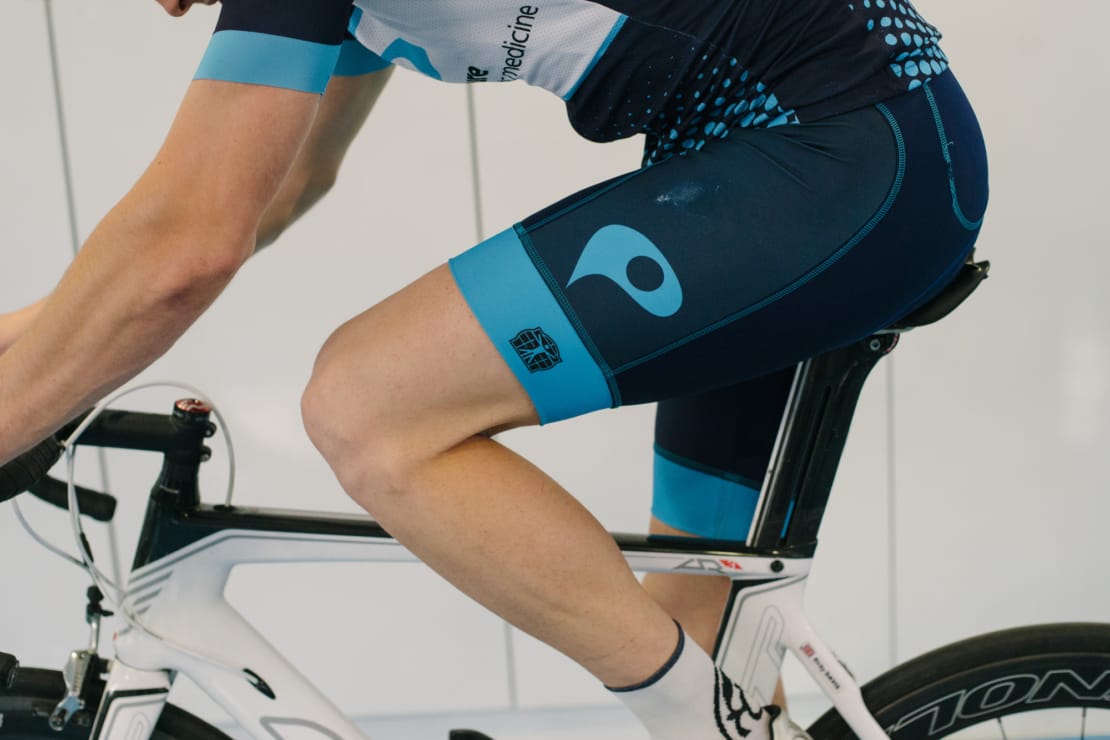Balancing Pain and Exercise: How to Stay Active Safely

Jordan Smitham
Rehabilitation Lead & Physiotherapist
- 20 September, 2021
- Exercise
- 3 min read
Did you know as many as one in four people in the UK suffer from chronic pain? If so, it won’t be a surprise to you when I say that one of the most common questions I get asked during a consultation is “can I exercise in pain?”

The short answer to this question is yes, you can exercise in pain. To explain why, we need to investigate the complexities of pain itself.
The International Association for The Study of Pain (IASP) defines pain as “an unpleasant sensory and emotional experience associated with, or resembling that associated with, actual or potential tissue damage”.
But pain is multifactorial and is not as simple as pain = damage. In fact, pain is a poor indicator of tissue state. Psychological, social, and biological factors all add up to the pain experience. We know that pain related fear can be more debilitating that pain itself. Therefore, to assess, understand and treat pain we must have a grasp of all these factors and not simply look at pain as something to be avoided.
Exercise can reduce chances of cardiovascular issues, help with mood and mental health, boosts energy, strengthens bones, reduces chances of all-cause mortality, and improves sleep as well as allowing us to be social.
In medical literature, exercise has been recommended as a treatment for chronic pain. Exercise can release endorphins – the body’s natural pain killer – as well as helping reconceptualising pain – in short challenging our beliefs about pain and tissue state, allowing ourselves to explore movements that were once perceived as being dangerous and becoming more comfortable.
Despite this, some people I see in clinic find exercise particularly painful, therefore we need to further understand exercise and its relationship to pain. A recent systematic review asked this question and showed that exercising with pain can have benefits including short term significant improvements. This is our first, clear sign that pain is not harmful.
So how can we exercise safely whilst in pain?
Well now that we have discussed the benefits of exercise and pain, I want to delve into the practicality of it, so I’ve collated my top tips for exercising when in pain. But first, it’s important to remember that all people are different, as are all pain presentations, therefore, I offer these as general guidelines to follow, not injury-specific advice. For that I recommend seeing a medical professional for a full assessment.
1. Monitor your pain level
We like to use a subjective scale that is personal to you to measure our pain. This scale is between 0 and 10 where 0 is no pain and 10 is the worst pain you’ve experienced. Don’t let pain go above a 3/10 at the time of exercising. There is evidence which supports going all out with exercise, and there is evidence which supports small amount of pain being ok. I say don’t push past a 3/10. This is less because we are worried about damage, and more that we don’t want your issue to flare up, all we want to do is exercise in a comfortable range that will allow progression. Your clinician may vary this dependent on where you are in your symptoms.
2. Prioritise sleep
We need to ensure that pain doesn’t affect your sleep after you exercise. Sleep is incredibly important for recovery, so we want to ensure a good night’s sleep of 6-8 hours, especially after exercise. A better night sleep can also aid with lifestyle changes such as increased activity because when you’re well rested, you’re more likely to be able to keep it up, whereas a sleep deprived person might need to opt out of exercise to continue resting. Pain can also be directly affected by poor quality sleep. Therefore, we don’t want the pain to affect your sleep. If your pain levels are doing this, decrease the intensity or load of your training and speak to a healthcare professional.
3. Ensure no increase in pain the following day
Monitor your pain levels the day after exercise, with the aim of no further intensity in your pain levels. The last thing we want to do is cause a flare up, so if this happens be sure to reduce the load/intensity the next time you exercise, and again, speak to your treating clinician if you are concerned.
4. Take it week by week
Ensure graded progression (starting off light and building up) and make exercise goal orientated. Once you’ve found your baseline, make sure you slowly increase the level, intensity and/or load week on week. Goal setting has been shown to be an effective way of ensuring adherence to a programme and can be a good motivator to progressions.
5. Try an activity you enjoy
There is no one perfect exercise regime. There are studies which support all types of exercises and strict exercise guidelines around pain are lacking. Evidence suggests that doing a hobby or something you love will increase your chances of sticking to the routine, so keeping exercise simple and enjoyable may be the best option for you.

Advice
Over the last 20+ years our experts have helped more than 100,000 patients, but we don’t stop there. We also like to share our knowledge and insight to help people lead healthier lives, and here you will find our extensive library of advice on a variety of topics to help you do the same.
OUR ADVICE HUBS See all Advice Hubs

